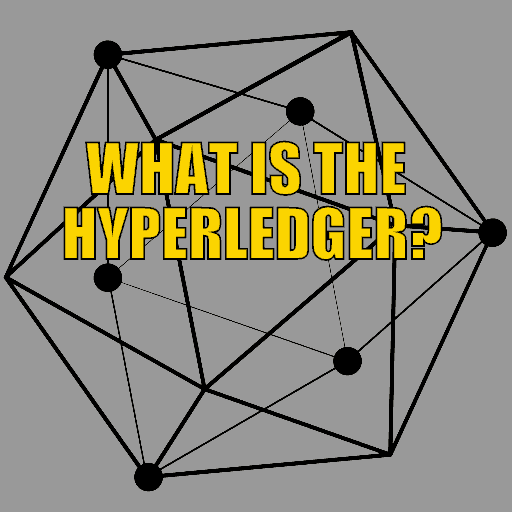There is certainly a lot of debate and side taking in the cryptocurrency versus gold debate (a debate we’re not actually sure is the right debate to even have).
Jim Rickards has put himself squarely in the gold camp. In this article he discusses the Linux Foundation’s open source project called the Hyperledger.
However we don’t like the sound of where this particular piece of technology is heading. That is:
“The ultimate application of permissioned DLT will be world money that will end the US dollar’s role as the benchmark global reserve currency. The IMF is developing a permissioned [Distributed Ledger Technology] for executing transactions in special drawing rights, SDRs, the only existing form of world money other than gold bullion.”
The only thing we can be sure of is that the monetary system is changing slowly but surely (and sometimes not so slowly) before our eyes. It pays to keep up with the possibilities but no one knows exactly how this all will play out. Don’t bet the house on any one outcome…
Profit From the Hyperledger
By Jim Rickards – originally posted at dailyreckoning.com.au
The new name for blockchain is DLT, which stands for distributed ledger technology.
As the name implies, DLT is a ‘ledger’ (or record) that is maintained widely by a large number of market participants. This removes the need for a single intermediary such as a bank or exchange.
The early leader in DLT is the Linux Foundation’s open source project called the Hyperledger, and supported by IBM among others.
‘Open source’ means that the computer code is shared among all participants in the project and is not kept secret.
Developers can use the open source code to make improvements in exchange for contributing their own code to the project. Some specific applications may remain proprietary, but the source code is widely shared.
Open source projects may be controlled by a single entity or distributed among as many entities as wish to join the project. IBM favours the latter model. The Linux Foundation, a non-profit entity, acts as a global facilitator and repository, but does not own the software. The software is essentially free.
One of the solutions to the scalability problems of bitcoin and the early blockchain is a migration from ‘permissionless’ systems to ‘permissioned’ systems.
Permissionless systems (such as bitcoin) are open to anyone, and require extensive ‘proof-of-work’ to verify transactions. This gives rise to the extensive maths and processing noted above.
In contrast, a permissioned system is only open to approved counterparties. The DLT ecosystem for a specific use case is still distributed, fast and cheap, but not anyone can play. You need to be admitted to the ecosystem, much like joining a club.
The vetting required to join the club, and the dual-level authentication needed to transact once inside, substitute for blockchain proof-of-work, and eliminate a lot of the wasteful maths and processing currently needed.
In effect, the new DLT systems offer the best of both worlds. You combine the efficiencies of blockchain transactions with the efficiencies of trusted counterparties. The result is an ecosystem of digital payments and smart contracts without the clunky proof-of-work.
The Linux Foundation has just released version 1.0 of its Hyperledger Fabric, a collaboration of 159 engineers from 28 separate organisations that advances open source blockchain technology.
World Money Ends the US Dollar
The ultimate application of permissioned DLT will be world money that will end the US dollar’s role as the benchmark global reserve currency. The IMF is developing a permissioned DLT for executing transactions in special drawing rights, SDRs, the only existing form of world money other than gold bullion.
Permission to use this Hyperledger would be granted only to the 189 countries that are members of the IMF, plus select multilateral organisations such as the United Nations, and the World Bank. Within the Hyperledger, members could settle balance of payments, including bilateral trade surpluses and deficits arising from the import and export of oil. This points to the end of the petrodollar.
At that point, the US dollar would be just another local currency, like the Mexican peso and the Turkish lira. We would still use dollars to take our friends out to dinner, but the world at large, including central banks, will settle cross-border balances and ultimately hold reserves denominated in SDRs on the IMF Hyperledger.
None of this will happen overnight, but it’s all happening now, faster than most realise.
Your place in this world
If you really want independence from government control and hacking, forget bitcoin. Try physical gold in secure non-bank storage. Gold is still the only form of money that does not rely on anyone or anything for its value.
If you want to participate in the most exciting and potentially profitable investment opportunities of the 21st century, you should leave bitcoin and clunky versions of the blockchain in the rear-view mirror.
Instead, have a look at companies like Gem, Soramitsu and Wipro, among others.
Technology is exciting, but it’s also a graveyard for companies and systems that become victim to what Joseph Schumpeter called ‘creative destruction’. Steam automobiles once looked like a promising technology. Yet, they were displaced by the internal combustion gasoline engine, which may soon be displaced by electric vehicles, EVs.
Bitcoin is both a financial bubble and a Stanley Steamer in terms of platform technology. The future is DLT on Hyperledger Fabric.
Regards,
 |
Jim Rickards
for The Daily Reckoning Australia

